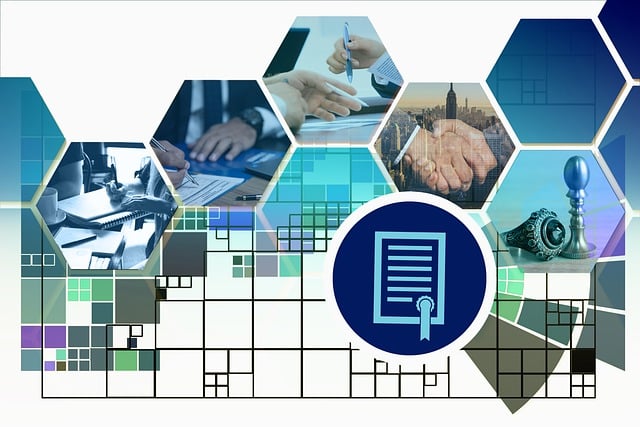In the competitive UK market for editorial columns and translation services, success hinges on navigating cultural landscapes beyond literal translations. Skilled translators, aided by advanced technology like AI-powered neural machine translation (NMT), meticulously capture subtle differences in humor, idioms, and references to create engaging content that resonates with British readers while maintaining cultural sensitivities. Quality Assurance checks, iterative feedback processes, and expertise in specialized terminology are crucial for delivering high-quality translations that meet the unique needs of UK editorial columns, ensuring accuracy, fluency, and impact. AI-driven innovations promise a future transformation, enhancing efficiency and understanding of nuanced cultural contexts.
Accurate and engaging translations are vital for connecting global audiences, especially within the dynamic landscape of UK editorial columns. This comprehensive guide explores essential strategies to ensure quality in translation services, delving into cultural nuances, the role of native speakers, advanced technology, terminology management, and rigorous quality assurance checks. Discover how these practices elevate communication, ensuring that messages transcend language barriers with seamless precision and impact, specifically tailored for the UK market.
- Understanding Cultural Nuances: Going Beyond Word-for-Word Translation
- The Role of Native Speakers in Ensuring Accuracy
- Quality Assurance Checks: A Necessary Step for Engaging Translations
- Adapting to Different Tone and Style Requirements in UK Editorial Columns
- Utilizing Advanced Technology for Improved Precision
- Managing Complex Terminology: Creating Consistent Translations
- Proofreading and Editing: Polishing the Final Draft
- Client Feedback and Iteration: Refining Translation Services
- Case Studies: Successful Accurate Translations in Action
- Future Trends in UK Translation Services: AI and Beyond
Understanding Cultural Nuances: Going Beyond Word-for-Word Translation

Accurate translations go beyond mere word-for-word substitutions, especially when navigating diverse cultural landscapes. In the world of UK editorial columns and translation services, understanding cultural nuances is paramount to ensuring engaging, meaningful content. What may seem like a simple phrase in one language can carry entirely different connotations or even literal translations that make little sense in another.
For instance, a seemingly harmless expression could be considered offensive due to unspoken social norms or historical context. Skilled translators don’t just replace words; they immerse themselves in the source and target cultures, appreciating subtle differences in humor, idioms, and cultural references. This nuanced approach guarantees that the translated text resonates with readers, effectively conveying the author’s intended message while respecting cultural sensitivities.
The Role of Native Speakers in Ensuring Accuracy

In the realm of translation services, especially for UK editorial columns, native speakers play a pivotal role in ensuring accuracy and fluency. They serve as the bridge between the source text and its intended audience, offering not just linguistic proficiency but also a deep understanding of cultural nuances. This is particularly crucial when translating content meant for British readers, as it ensures that the translated text resonates with the local market, accurately conveying the author’s intended message and tone.
The involvement of native speakers helps to avoid common pitfalls like literal translations that may sound awkward or incorrect in the target language. They possess the ability to adapt the translation to suit the natural flow of the language, making it engaging and easy to comprehend for the UK audience. This level of expertise is invaluable in maintaining the integrity of the original content while enhancing its readability and impact.
Quality Assurance Checks: A Necessary Step for Engaging Translations

In the realm of translation services, ensuring accuracy is paramount, especially for UK editorial columns where nuanced language and cultural context are key. While machine translations have advanced significantly, they often fall short in capturing the subtleties and intent behind written content. Thus, Quality Assurance (QA) checks become an indispensable step in the translation process. These rigorous reviews involve human translators or subject matter experts who scrutinize the translated text for grammatical correctness, semantic coherence, and cultural appropriateness.
By implementing QA checks, UK editorial column translations can maintain their integrity and engagement. This additional layer of scrutiny helps identify potential errors, improves readability, and ensures that the translated content resonates with the target audience. In a competitive market where high-quality content is paramount, these checks are not just recommended but necessary for professional translation services to deliver outstanding results.
Adapting to Different Tone and Style Requirements in UK Editorial Columns

When translating content for UK editorial columns, understanding and adapting to different tone and style requirements is paramount. Effective translation services for these pieces must capture the author’s intended voice while adhering to the specific standards of British journalism. The formal and sometimes witty tone characteristic of many UK editorials demands precision in choosing equivalent expressions in the target language.
Translators should aim to convey not just the meaning but also the subtle nuances and humor present in the original text. This involves a deep knowledge of both languages, as well as cultural sensitivity. Professional translation services for UK editorial columns therefore require linguists who are not only proficient but also familiar with the specific demands of British English in a editorial context.
Utilizing Advanced Technology for Improved Precision

In today’s globalized world, accurate and engaging translations are more important than ever for businesses and individuals alike, especially in the UK market with its diverse linguistic landscape. Advanced technology plays a pivotal role in achieving this precision. AI-powered translation tools, for instance, have revolutionized the industry by offering faster, more dynamic, and contextually relevant translations. These tools use neural machine translation (NMT) models that analyze vast amounts of data to understand nuances in language, ensuring that translations are not just literal but also culturally appropriate and grammatically sound.
Furthermore, these technologies often incorporate features like machine learning, which allows them to improve over time based on user feedback and new data. This continuous enhancement ensures that UK editorial columns, or any text for that matter, receive the highest level of translation quality. By leveraging such advanced technology, translation services can deliver accurate, fluent, and engaging content that resonates with audiences worldwide, catering to the specific linguistic needs of diverse communities within the UK.
Managing Complex Terminology: Creating Consistent Translations

In the realm of UK editorial columns and translation services, managing complex terminology is a delicate dance. Each industry, from healthcare to law, boasts its own unique jargon, making consistency in translations paramount. Professional translators must become experts on these terminologies, ensuring that each term is accurately represented across different texts. This involves extensive research and often consultation with subject matter experts to grasp the nuances of specialized fields.
Creating consistent translations requires a meticulous approach. Translators should maintain a comprehensive glossary, documenting and standardizing key terms. This not only guarantees coherence but also streamlines the translation process for future projects. Such consistency is vital in maintaining the integrity of the original content, ensuring that UK editorial columns remain engaging and accessible to diverse audiences while conveying precise information.
Proofreading and Editing: Polishing the Final Draft

After completing the initial translation, meticulous proofreading and editing are vital steps in ensuring accuracy and engaging content. This process involves a thorough review of the translated text to catch any grammatical errors, inconsistencies, or cultural nuances missed during the first draft. UK editorial columns for translation services often emphasize this step as crucial for delivering high-quality work.
Skilled translators or editors carefully comb through every word, sentence, and paragraph, ensuring the translated version flows naturally while remaining true to the original meaning. They may adjust phrasing, improve clarity, or even suggest alternative translations to enhance the overall readability. This meticulous attention to detail guarantees that the final draft is not just a translation but a polished piece of content ready to engage its target audience.
Client Feedback and Iteration: Refining Translation Services

In the realm of translation services, client feedback plays a pivotal role in ensuring accuracy and engagement. UK-based editorial columns, known for their intricate language use and cultural nuances, demand meticulous handling during translation. Feedback from clients, who are often native speakers or experts in their fields, serves as a powerful tool to refine and improve translated content. By incorporating client insights, translation services can better capture the intended meaning, tone, and style, making the output more authentic and engaging for the target audience.
Iterative processes, where initial translations are reviewed and revised based on client feedback, are essential in achieving high-quality results. This back-and-forth dialogue allows translators to refine their work, addressing any discrepancies or misinterpretations. The UK’s rich linguistic landscape, with its diverse dialects and regional variations, adds another layer of complexity. Iterative feedback ensures that these subtleties are preserved, making the translation not just accurate but also culturally sensitive. This refining process is crucial in maintaining the integrity of the original text while enhancing readability and fluency in the target language.
Case Studies: Successful Accurate Translations in Action

Successful translations often serve as a testament to the skilled work of professional translators, who must navigate the nuances of language and culture. UK editorial columns, for instance, require precise handling of idiomatic expressions and colloquialisms to ensure meaning is conveyed accurately while sounding natural in the target language. A case study highlighting a translation service that successfully navigated this challenge could demonstrate the importance of cultural sensitivity and linguistic expertise.
Consider a recent project where a UK-based publication needed to translate their monthly column on sustainable living into several European languages. The translator, fluent in both English and the target languages, delved into the intricacies of each, ensuring environmental concepts were conveyed precisely. They also adapted references to local customs and products, making the content relatable for readers across Europe. This approach resulted in engaging, informative columns that resonated with audiences, boosting reader engagement and expanding the publication’s reach.
Future Trends in UK Translation Services: AI and Beyond

The future of UK translation services is poised for a significant transformation, driven largely by advancements in artificial intelligence (AI). AI-powered tools are already enhancing the efficiency and accuracy of translations, making it possible to cater to the vast volume of content being produced globally. As these technologies mature, we can expect even more sophisticated systems that can understand nuances, context, and cultural subtleties with greater depth. This evolution promises to revolutionize not just machine translation but also human-assisted translation processes, streamlining workflows and reducing costs.
Beyond AI, other trends are shaping the landscape of UK editorial columns translation services. The increasing demand for localization in various industries, from tech to healthcare, necessitates a focus on cultural relevance and adaptability. Translation services will need to embrace dynamic approaches that go beyond language conversion, incorporating best practices in content strategy, user experience design, and market-specific terminology. Additionally, the integration of advanced technologies like neural machine translation (NMT) and computer-assisted translation (CAT) tools will enable translators to deliver more consistent, high-quality results, ensuring that UK audiences receive engaging and accurate content tailored to their linguistic and cultural preferences.
In ensuring accurate and engaging translations, especially within the context of UK editorial columns, it’s clear that a multifaceted approach is essential. From understanding cultural nuances to leveraging advanced technology and managing complex terminology, every step plays a crucial role in delivering high-quality results. The involvement of native speakers, stringent quality assurance checks, and iterative client feedback processes further enhance the precision and relevance of these translations. As we look towards the future, AI and other innovative tools promise to revolutionize UK translation services, making them more efficient and accessible than ever before.
